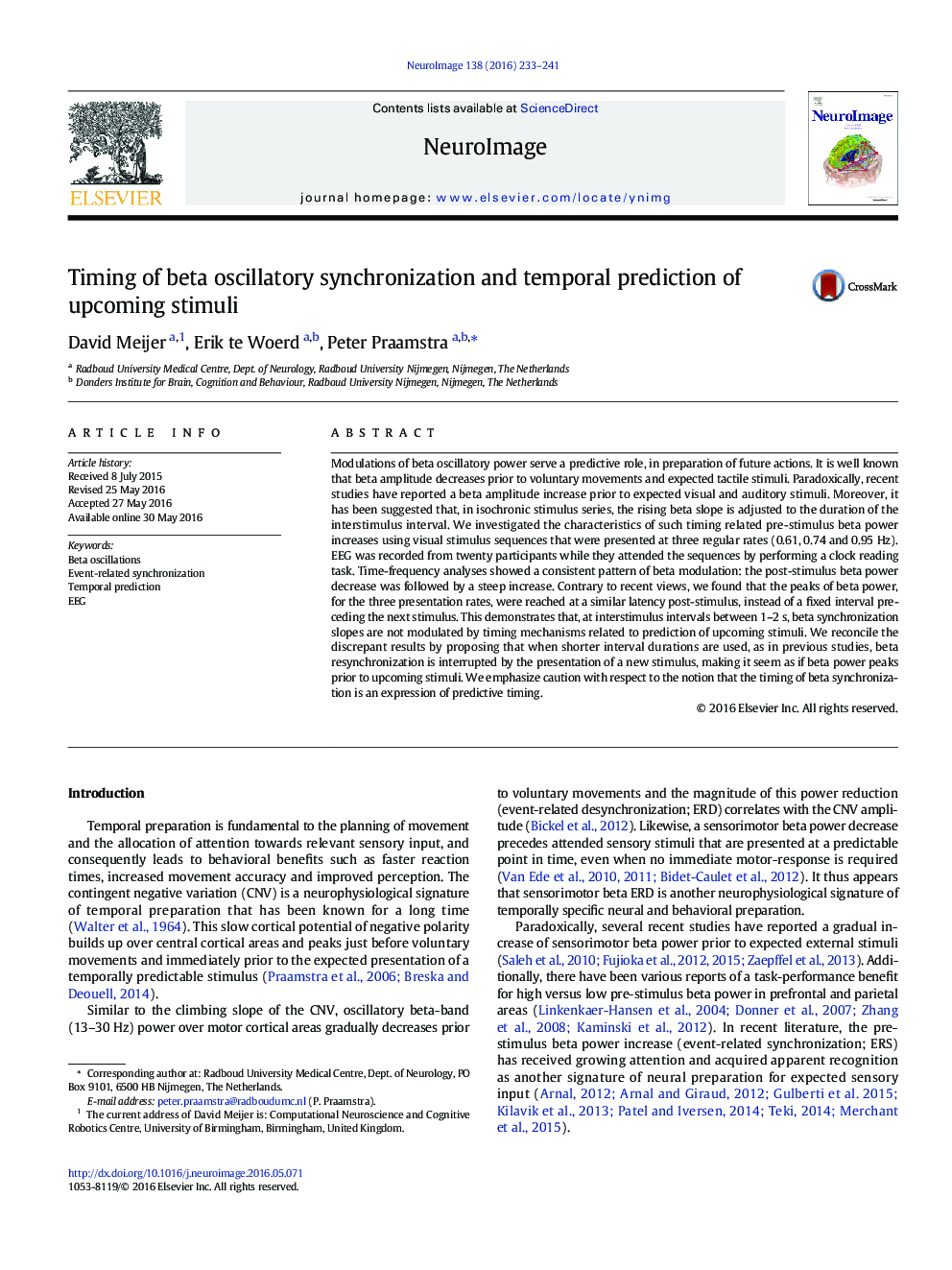| Article ID | Journal | Published Year | Pages | File Type |
|---|---|---|---|---|
| 6023521 | NeuroImage | 2016 | 9 Pages |
Modulations of beta oscillatory power serve a predictive role, in preparation of future actions. It is well known that beta amplitude decreases prior to voluntary movements and expected tactile stimuli. Paradoxically, recent studies have reported a beta amplitude increase prior to expected visual and auditory stimuli. Moreover, it has been suggested that, in isochronic stimulus series, the rising beta slope is adjusted to the duration of the interstimulus interval. We investigated the characteristics of such timing related pre-stimulus beta power increases using visual stimulus sequences that were presented at three regular rates (0.61, 0.74 and 0.95Â Hz). EEG was recorded from twenty participants while they attended the sequences by performing a clock reading task. Time-frequency analyses showed a consistent pattern of beta modulation: the post-stimulus beta power decrease was followed by a steep increase. Contrary to recent views, we found that the peaks of beta power, for the three presentation rates, were reached at a similar latency post-stimulus, instead of a fixed interval preceding the next stimulus. This demonstrates that, at interstimulus intervals between 1-2Â s, beta synchronization slopes are not modulated by timing mechanisms related to prediction of upcoming stimuli. We reconcile the discrepant results by proposing that when shorter interval durations are used, as in previous studies, beta resynchronization is interrupted by the presentation of a new stimulus, making it seem as if beta power peaks prior to upcoming stimuli. We emphasize caution with respect to the notion that the timing of beta synchronization is an expression of predictive timing.
